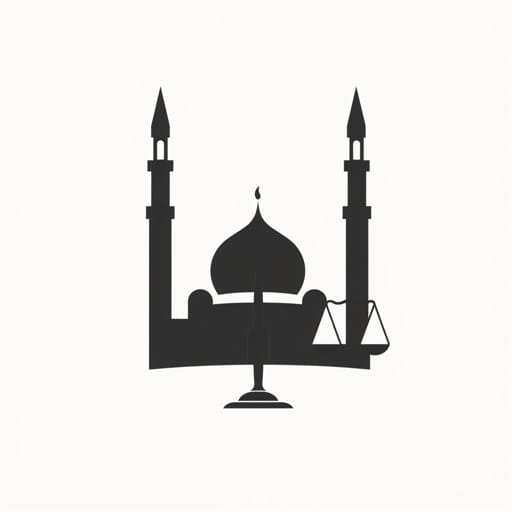Zia Ul Haq Sharia Law
In the history of Pakistan, few leaders have left as lasting an impact on the country’s legal and religious landscape as General Muhammad Zia-ul-Haq. Serving as the sixth president of Pakistan from 1978 until his death in 1988, Zia is most remembered for his controversial and transformative introduction of Sharia law into the nation’s judicial and political systems. His Islamization policies marked a major shift from secular governance to a framework more heavily influenced by religious principles. The era of Zia-ul-Haq’s rule remains a pivotal chapter in Pakistan’s journey, deeply influencing everything from criminal justice to education and civil rights.
Background of Zia-ul-Haq’s Regime
Zia-ul-Haq came to power through a military coup in 1977, ousting then-Prime Minister Zulfikar Ali Bhutto. Initially, Zia promised elections within 90 days, but he eventually extended his rule by declaring martial law and consolidating power under the military. He used the idea of Islamization as both a political strategy and a tool for national unity. His call for implementing Sharia law was not just about religion it was also a means to legitimize his undemocratic regime and suppress political opposition.
The Objectives of Islamization
Zia’s push for Islamic law, often called the ‘Islamization program,’ was rooted in several goals:
- To align Pakistan’s laws with Islamic injunctions.
- To gain political legitimacy through religious endorsement.
- To differentiate Pakistan from India by emphasizing Islamic identity.
- To centralize power and reduce political dissent using religious sentiment.
Implementation of Sharia Law
The most noticeable change under Zia was the introduction of Sharia law into Pakistan’s legal framework. This transformation involved a series of legal, institutional, and constitutional reforms designed to bring the state into closer alignment with Islamic principles. Zia set up various mechanisms to interpret and enforce Islamic law, such as the Federal Shariat Court and Shariat Appellate Bench in the Supreme Court.
Hudood Ordinances
One of the most controversial aspects of Zia’s Sharia implementation was the Hudood Ordinances introduced in 1979. These laws covered offenses such as theft, adultery, false accusation, and consumption of alcohol. The punishments prescribed were severe, including flogging, amputation, and stoning to death.
The Hudood laws were widely criticized, especially for their treatment of women. In cases of rape, a woman needed four male witnesses to prove the crime; failure to provide them could result in her being accused of adultery. This created a dangerous legal paradox and discouraged victims from reporting assaults.
Zakat and Ushr Ordinance
Another major component of Zia’s Islamization policy was the enforcement of Islamic taxes. In 1980, the government introduced the Zakat and Ushr Ordinance. Zakat, a form of almsgiving, was deducted from bank accounts and distributed through government-controlled channels, while Ushr was a tax on agricultural produce. Though religious in intention, these policies were criticized for their lack of transparency and equitable distribution.
Impact on Judiciary and Constitution
Zia also amended the Constitution to reflect his Islamic policies. He added topic 203-D to the Constitution, granting the Federal Shariat Court the authority to examine and nullify any law deemed un-Islamic. Furthermore, the Objectives Resolution, which was originally a non-binding preamble, was made part of the Constitution in 1985, emphasizing the supremacy of Islamic principles in governance.
Changes in the Education System
The education sector was also not spared from Zia’s Islamization program. School curriculums were revised to focus more on Islamic teachings, often at the expense of scientific and historical accuracy. Arabic was promoted as a second language, and madrasas flourished under state support. This shift in educational policy had long-term consequences, as it influenced generations of students and promoted a particular ideological narrative.
Public Reaction and Criticism
Zia’s Sharia law policies were met with mixed reactions. While some conservative factions and religious groups welcomed the changes, many intellectuals, human rights activists, and members of the legal community voiced strong opposition. Women’s rights groups were particularly vocal against laws that they believed institutionalized gender inequality.
Internationally, human rights organizations criticized Pakistan for allowing medieval punishments and limiting personal freedoms. Yet, Zia continued his policies with strong support from religious clerics and due to geopolitical backing from the West during the Soviet-Afghan War.
Lasting Legacy of Zia’s Sharia Laws
Though Zia-ul-Haq died in a mysterious plane crash in 1988, the legacy of his Sharia laws did not end with him. Many of the laws introduced during his regime are still part of Pakistan’s legal framework. Despite subsequent efforts by some leaders to reform or repeal controversial ordinances, resistance from conservative groups has often stalled progress.
The judicial system remains influenced by the Federal Shariat Court, and the role of Islam in legislation continues to be a highly sensitive political topic in the country. The educational and ideological shifts initiated during Zia’s tenure have left a profound imprint on national identity and societal attitudes.
Zia-ul-Haq’s implementation of Sharia law in Pakistan was one of the most radical shifts in the country’s post-independence history. His policies aimed to align state governance with Islamic principles, but they also resulted in significant legal, social, and political challenges. While some credit his Islamization agenda for reasserting Pakistan’s religious identity, others argue that it set back democratic development, human rights, and gender equality. Understanding Zia’s era is essential for grasping the current debates around law, religion, and governance in Pakistan. His Sharia law reforms remain a subject of intense analysis, reflection, and controversy to this day.
